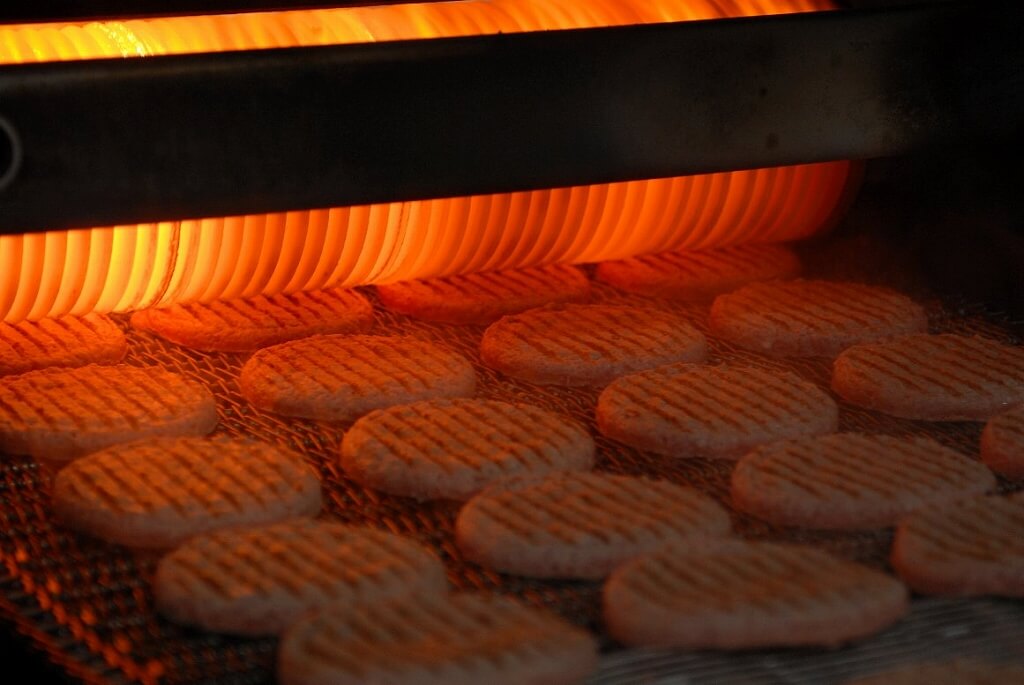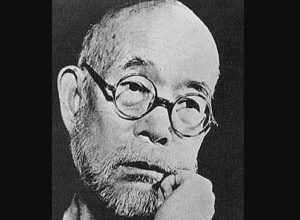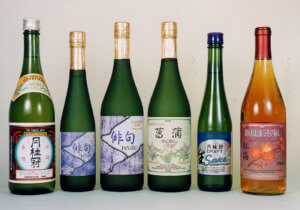Behind the Success of Japan's Restaurant Business
CONTENTS
- If You Really Please the Customer, Success Will Come In Good Time
- Closing In On The Secret: The Buiness Philosophy of Casual Italian Restaurant Saizeriya
- Slash the Price of His Signature Milanese Doria Dish
- “We want to please our customers.”
- Forget Profit, 70% Discount
- Please the Customer Even If We Have to Lose Money
- Talk About Your Grand Vision
- Radical Cost-Cutting Raises “Man-Hour Gross Profit”
- After Tough Part, a New World Will Come into View
If You Really Please the Customer, Success Will Come In Good Time
Closing In On The Secret: The Buiness Philosophy of Casual Italian Restaurant Saizeriya
Milanese Doria gratin dish 299 yen ($3). Wine by the glass 100 yen ($1). Everyone in Japan must know Saizeriya as the popular casual Italian restaurant with surprisingly low prices. What first came to life 42 years ago as a tiny western-style restaurant in Chiba's Ichikawa City today has grown into a huge chain with almost 1,000 restaurants in Japan and abroad. Founder and chairman Yasuhiko Shogaki accomplished this growth in a single generation – how did he inspire and educate his employees? In this interview we will deconstruct the leadership qualities of Mr. Shogaki.
The high school student stuffs his face, alternating between the Milanese Doria and the Spaghetti Peperoncino. The family shares numerous varieties of pasta and pizza dishes. The senior couple is surprised at the 100-yen a glass wine and focaccia appetizer.
“It’s this good for that price?” “You can definitely fill up even on just 1,000 yen!” With such a strong price-performance profile, restaurant chain Saizeriya has captured the loyalty of a wide-ranging customer base, growing to become one of Japan’s larger restaurant chains with about 1,000 stores in Japan and overseas and employing more than 2,000 people. Some think that Saizeriya is part of a larger corporate restaurant chain, but in fact it is completely independent. It has its beginnings in 1967, with the tiny western-style restaurant in Chiba’s Ichikawa City where current Saizeriya chairman Yasuhiko Shogaki used to toil.
When that little restaurant opened, Shogaki was still a student at Tokyo University of Science. His only restaurant experience thus far had been a part-time job at a cafeteria, and neither did he come from a restaurant-owning family.
Slash the Price of His Signature Milanese Doria Dish
How did this young inexperienced student manage to build and continue to grow Saizeriya to become the standout of its business category?
“I was never alone in wanting to build this company bigger. It is so much fun to work our hardest for our customers. I have been carried this far thanks to employees like that, is how I feel,” tells Shogaki.

Why is it that hard-working and motivated people tend to gravitate towards Shogaki? In listening to his stories we can catch a glimpse of the unifying energy that tends to motivate others.
The first great opportunity to let the world know of the superior cost performance of Saizeriya came when the restaurant decided to slash the price of the Milano Doria rice gratin in 1999 by 40%. Overnight Saizeriya began offering the 480-yen ($6) dish at just 290 yen ($3.75).
At the time this dish was already the biggest seller for Saizeriya. It was having plenty of impact on earnings even without the drastic price cut. Why did Shogaki cut the price by 40%? He answers as if it were nothing out of the ordinary.
“We want to please our customers.”
“I just thought that our customers would be pleased if we reduced the price of our top-selling item. There was really no particular reason.”
“For the customer.” “We want to please our customers.” Just in the course of this barely one hour interview, Shogaki used phrases like this 20 or even 30 times. Of course, anyone can say they are doing something “for the customer,” but what makes Shogaki different is that his actions truly match his words. He doesn’t hesitate to take such actions even when they may reduce his own profit by a wide margin. The Milanese Doria is the perfect example. Others are the Italian ham that he offers at less than the local price, the glass of wine at 100 yen – the menu items he has offered at close to or below cost are too numerous to list here.

“It’s not a matter of short term profit or loss. If we really please the customer, everything will turn out right in the end.”
Forget Profit, 70% Discount
The experience that brought Shogaki to this way of thinking was something that happened in the early years of the business. He was successful in turning around the struggling restaurant by cutting all the prices on the menu by 70%.
Shogaki opened his own restaurant and showed his ability in cooking, but due to the poor location of the business he was struggling to get any customers at all. When he tried staying open till 4:00am he ended up attracting the neighborhood tough guys. This eventually went the way one might expect when in the ninth month after opening some of this bad element had a fight in the shop and one of them ripped out the oil-burning heater, causing a fire that ended up destroying the restaurant.
Having been inspired by what he experienced while traveling, Shogaki re-opened in a new business category, changing over to Italian food. Although he said to himself, “This time I'm really going to make it work,” as before, he couldn't attract customers, either. “This time I finally realized that though I was looking outside myself for answers as to why I couldn't succeed, such as the location was bad and the clientele was undesirable, the fact was that my cooking was not at a level that would please the customer.”
The action that Shogaki took at that juncture was to cut prices by a wide margin. First he took a 30% discount, then eventually 70%. That brought the price of a plate of pasta down to 150-200 yen.
Cutting prices that low meant there would always be some menu items that lost money. And worse, he was unable to pay his employees at a satisfactory level. He needed plenty of courage to stick to his determination.
“But I really felt, going to these lengths we will definitely please the customer. I didn't think about what would happen after that, but I needed to give it a try.”
This was the turning point. From about 20 customers a day, the restaurant jumped almost overnight to between 600 and 800 a day. So busy he barely had time to sleep, Shogaki finally began to turn a profit.
“From this experience, I learned firsthand that if you do things that are meant to please the customer, in any case, the results will come back to you.”
Please the Customer Even If We Have to Lose Money
Since then, “For the customer” and “Please the customer” have become the corporate mission of Saizeriya, and Shogaki has spoken on these ideas many times to his employees.
“People tend to have a kind of “geocentric” view, that is, that things revolve around them, and so when things don’t come around to their liking they tend to see the reason for it in external factors, and then they fail to look within themselves for the answers. In terms of trying to make the business better, this is a very dangerous way to look at the world. But if we stick to only thinking about “pleasing the customer,” we will soon come to see things in an objective manner.”
Then in the early half of the decade that started in 2000, Shogaki was reminded again of the importance of thoroughly instilling the corporate mission among his employees. Due to the rapid expansion of the chain Shogaki found himself unable to talk directly to employees about the corporate mission, which resulted in a decline in customer service at the restaurants. With the goal of rectifying this directly with the new restaurants, Shogaki convened a national conference of Saizeriya restaurant managers.
“Of course we were talking to each other about it during the normal course of business. Some managers were opposed to it - “If we sell it at that low price, we stand to lose several hundred million yen in profit.” I rejected their argument out of hand, and told them to think about pleasing the customer first. It's okay if profit is your secondary consideration.”
If your founder tells you it's okay to make less money, as an employee you will be prepared for the worst, and have all the more reason to want to be proactive about doing your best for the customer.
“In reality of course there is nobody who can work 100% all the time for the customer alone. If they are 51% thinking of the customer, that's excellent. Usually it's probably more like 5%-10%. But their actions will be completely different depending on whether or not they are aware that they should be raising that percentage. That's precisely why I keep saying it to them.”
Today the Saizeriya mission has been restated in the following words. “For people – Right-mindedly – Harmoniously.” “For people” means to act for the sake of all stakeholders, including employees and vendors as well as customers. “Right-mindedly” means to behave with a sense of ethics. “Harmoniously” means to avoid causing each other discomfort, as mutual members of society.
Talk About Your Grand Vision
You have to create an attractive vision of the future in order to boost employee motivation. In this sense, Shogaki has held up his own grand vision even from the time when his company was small in scale. “To bring food that can be enjoyed on a daily basis and that will grow healthy bodies everywhere in Japan.” He told people about this dream even when he had only a few restaurants.
He also declared to those around him his goal of building a network of 1,000 stores nationwide in order to achieve that dream. He partnered with a huge farm in Tohoku which still serves as a company farm at a time when Saizeriya was still a small chain. Shogaki apparently wooed the farm owners by telling them his business would soon be expanding to 1,000 stores. Since this was coming from a man who had just 18 restaurants at the time, it wouldn’t be surprising if the farm owner thought he was talking to a pathological liar.
But Shogaki is steadily approaching the realization of that grand vision. From the late 90s Saizeriya has been growing at the pace of 100 new stores a year, and this momentum has led in no time to 900 restaurants in Japan alone.
Witnessing this energy and drive at work, one could easily become motivated to want to contribute and do one’s part to achieve that great dream.
“Most people do not talk about ideals that seem difficult to realize. That’s because they don’t want to make fools of themselves. But because I do talk about my grand vision, I end up with talented people around me, helping me to realize it. If your wife and friends are wondering if you haven’t suddenly gone crazy because you’re talking about your goal so much, I would say that was just about the right level of commitment (laughs).”
Radical Cost-Cutting Raises “Man-Hour Gross Profit”
Shogaki stresses “Please the Customer,” but he is not ignoring his employees. Far from it, he speaks of employees as being the most critical factor in the business when he addresses shareholder meetings and other groups.
“We can say we are working for the customer, but if we push our employees too far, we won’t be able to keep it up for long.”

Shogaki feels strongly about this because of something that happened when he first opened his restaurant. At the time his friends from his first part-time job followed him to work in his restaurant, but for the first few years he was unable to provide them with suitable compensation. Regardless, none of them quit. It was because Shogaki had brought them in on his dream of building the store into something bigger, but even so Shogaki felt that things shouldn’t go on the way they were.
“One time, when I was sleeping over at the restaurant, the mother of one of my employees came to see me. When she was taking her leave, she bowed deeply, to me, not much more than a boy in his early 20s, saying, “Take good care of my son.” Seeing her attitude, I felt that I had been entrusted with another’s livelihood, and from the bottom of my heart I felt that I had to somehow find a way to better their situation.”
So what Shogaki has kept working on from the dawn of his business is how to raise “man-hour gross profit”. This divides the gross profit of a given day by the total hours worked by the employees. The bigger this value, the more efficient the earnings. In addition, this formula helps him keep wages high and reduce labor time.
“Vertical Merchandising” is the tool that allows Shogaki to do this. Saizeriya controls all aspects of the business from procurement of raw materials to serving the food in the restaurant, drastically reducing waste at every step. First off, by owning its own farm and processing plants, Saizeriya controls the production of primary materials. In order to reduce cooking work at the restaurants, the company makes thorough use of centralized kitchens. On site in the restaurants as well, all kinds of processes have been designed and layered to the end of cutting costs, such as streamlining cleaning procedures, keeping the menu limited as much as possible to dishes that can be prepared in a single oven, not splitting staff between kitchen and floor so that everyone can pitch in where needed, etc.

Automated process of cooking 
Due to these efforts, Saizeriya is able to keep its products cheap, and at the same time reduce the amount of work that employees need to perform, thus raising productivity. And apparently Saizeriya is also able to sustain a comparatively high level of wages within the fast-casual industry.
“I come from a science background. According to quantum mechanics, all matter wants to reside in a state of “harmony,” and at the same time is constantly evolving toward a new state of “harmony.” My pet theory is that the same holds true in the world of business. It is not that someone is losing money, it’s that everything is always moving toward a state of harmony. In the case of Saizeriya, I believe that in any and all cases, we can indeed please everybody, the customers, of course, and also the employees, shareholders and families.”
After Tough Part, a New World Will Come into View
After continually posting favorable financial results, Saizeriya was impacted significantly by the recent Great East Japan Earthquake.
The impact was felt most deeply at the million-tsubo (about 3,300,000 m2) Saizeriya farm in Fukushima’s Shirakawa, half of which has been closed down. As a so-called pilot farm, it was responsible for developing different products and methods of cultivation and distribution. Even on the receiving end of this type of adversity Shogaki isn’t undaunted.
“If I just believe that everything is evolving toward a new harmony, even disadvantageous happenings are nothing more than a part of that process. Getting past experiences that I didn’t want to experience has shown me every time a new world opening up.”
Shogaki moved quickly. By April he had decided to start a tomato farm in a disaster area in Sendai, Miyagi Prefecture. It is a region that has heavy salt damage to its rice paddies because of the tsunami, but with greenhouse hydro culture, there will apparently be no problem with cultivation.
“The greenhouses are being completed bit by bit, and we plan to have it be our main tomato production source within five years.”
With this utterance again we can see the pervasive self-confidence that knows it will overcome this adversity as well. This gutsiness is the wellspring of Shogaki’s unifying energy that makes him a true leader.


